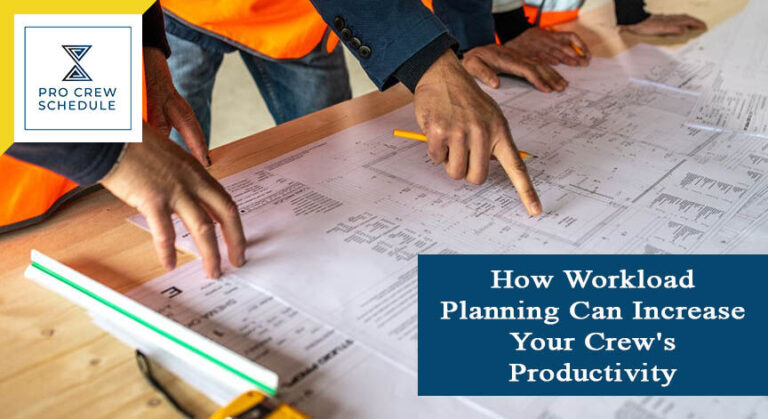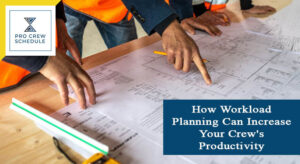Regardless of your industry, everyone has had weeks when they have too many things to do and feel overwhelmed with how to finish the tasks. You might have moments where you want to sit around and do nothing. As a result, planning workloads has been an essential part of construction. The project manager is responsible for ensuring that everyone on your team has equal work to do.
This is where efficient workload management comes in. Taking a good look at task planning and developing an idea to help you find the right balance for your project team can ensure you realize all its benefits.
Project managers must help their teams understand what to do when needed, how it fits the bigger picture, and how it can make or break the project’s success. However, most teams do not want you to watch and micromanage them, as they use project management tools to check off tasks. Therefore, you must balance giving your team freedom and telling them what to do.
In this article, we will examine workload planning and how it can boost your crew’s productivity and ensure its quality and timely completion.
What Is Workload Planning?
Some people also call it “workload management.” Workload planning is a strategic way to get your team to work as efficiently as possible so you can meet your goals. It includes planning, organizing, allocating, and keeping an eye on work to ensure teams meet their objectives and that everyone does an equal amount of it. You can do this by breaking down a team’s tasks and planning how to do them best so that everyone does their fair share of the work without being overworked or burned out.
Planning your workload is an ongoing process throughout the project’s duration. As the project progresses, you will need to keep going back and changing how the work is divided as the project changes or the way your team works together changes. You usually give team members tasks based on their abilities, skill level, and area of expertise. You will also consider time off and the hours needed for administrative or non-project chores.
What Is A Workload Plan?
A workload plan, also called a workload management plan, is a project calendar or dashboard that shows when each person is working and what they are doing. This way, you can see the overview of your project’s productivity and get valuable insights on how to determine how to use the best resources, how much work a team can handle, and how to keep track of employee success. Workload plans can differ depending on your project or organization’s needs and show different levels of information, such as deliverables, constraints, milestones, and the percentage of work done.
By managing their work, you can keep your teams busy and effective. It’s a smart way to divide the work and get everyone on your team to improve. However, handling the workload is not just about making good use of resources but also about keeping the team from getting stressed out, burned out, and making mistakes. Managing workloads helps businesses finish tasks on time and within budget.
How To Set Up and Plan Your Workload
A workload plan can help you assign tasks, determine how to divide your team’s work and ensure everyone is doing their fair share. It usually includes the following:
Scheduling Tasks
A project manager creates a schedule for crew members and assigns the right person to the right task to ensure the project’s productivity. A clear, attainable, and timely plan is critical to planning goals and project due dates.
After figuring out how much work your team will have in the future, you can try using technology such as construction scheduling software to assign tasks and resources, keep everyone on the same page, and get an overview of the crew’s tasks and activities.
Giving Control and Resources To The Right People
Please get to know your employees and give them jobs based on their strengths, skills, and abilities. This ensures everyone has equal work and that no one gets too busy or overworked.
Keeping An Eye On The Workload
To ensure jobs are done on time and within budget, it is just as important to plan and schedule them as to keep track of them. Workload schedules can vary daily, weekly, or monthly, depending on the project’s status and requirements. As a result, it is critical to regularly check in to see if the original plan is still working and if any changes need to be implemented. Ask yourself the following questions: Has the project’s purpose changed? Have things gone wrong that were not expected?
Predicting Workload
One of the most important things you can do to manage your job is to know how much work your project needs now and in the future. To do this, you will need to check your workload capacity and measure how well your resources are being used to make sure they match your business and customer demand predictions.
How Workload Planning Can Help Ensure Your Project’s Success
Planning your workload can help you and your organization in many ways. This section examines the benefits of an efficient and effective workload planning system.
Less Stress and Burnout For Your Workers
Construction is highly laborious and exhausting, with over half the crew being burned out. Efficiently planning your workers’ workloads gives you the power to stop employee burnout before it becomes a problem by ensuring everyone has the same amount of work to do. This also increases employee engagement and retention, providing a happy and healthy working environment.
Boost Employee Involvement and Happiness
If employees are assigned tasks that are not a good fit for them, their daily work can make them feel less engaged and ineffective. When you plan your employees’ work, you can consider their hobbies and strengths to assign the right person to the right task.
Lessen Mistakes
You can ensure that the best-equipped person does the most critical work when you assign skills-based jobs. Everybody will be able to match jobs to their abilities better. This also increases the quality of your project, reducing the need to rework mistakes.
Single Source of Truth
Setting clear goals, who is responsible for what, and who owns the tasks fills communication gaps between workers and employees. Overall, planning your team’s work does a great job of making them more productive. Each worker’s time and effort are best used when given work based on their skills and availability. Everyone is more effective when stress levels go down, and interest goes up.
How to Create A Workload Plan To Keep Track of Your Team’s Work
Planning your workload involves only a few easy steps, but the processes can be complex and challenging. You must find your team’s best balance of tools and tasks, although this may take some practice. Although it may seem overwhelming initially, if you follow these steps and use a tool for managing workloads, you will have a solid base.
Itemize Everything You Need to Do
The first thing you should do when planning your team’s workload is get a complete picture of their work. Make a list of everything your team needs to do in your time. This list should include all your tasks, from the most important and specialized ones to the more general ones, like checking your email or attending meetings.
Determine How Much Time Your Team Needs
You will need to tell your team how much time they have to work on the jobs you have made. In the beginning, list all the hours your workers are supposed to put in during the job. Then, determine how many hours each worker puts in by considering planned vacations, lunch or other breaks, and regular meetings. This will help ensure your workers have enough time to finish their work. Lastly, think about what skills or strengths your workers may have.
Assign Tasks To The Right Team Member
Assign tasks to start putting everything together. First, give the most important tasks to the team member who is best able to do them based on their skills and abilities listed in the previous step. Get to know your employees and switch jobs or change if needed.
Utilize Construction Technologies
Planning work hours with spreadsheets or other manual methods is a terrible idea. It is hard to be sure you’ve changed everything affected by a change when you make one.
On the other hand, a tool for planning, like construction management software, can help you get more done and schedule your time better.
Check in and Communicate Often with Your Team
Ensure your team knows what you want them to do and can do it. Give them a chance to talk about any problems or issues they have with the jobs they have been given, and then make any changes you think are necessary. To keep your team from getting burned out, you must review and check in with them again as the project’s scope changes, new jobs arise, or other things happen. Communication is also essential for keeping workers interested and reducing stress, which is vital for a fun workplace.







